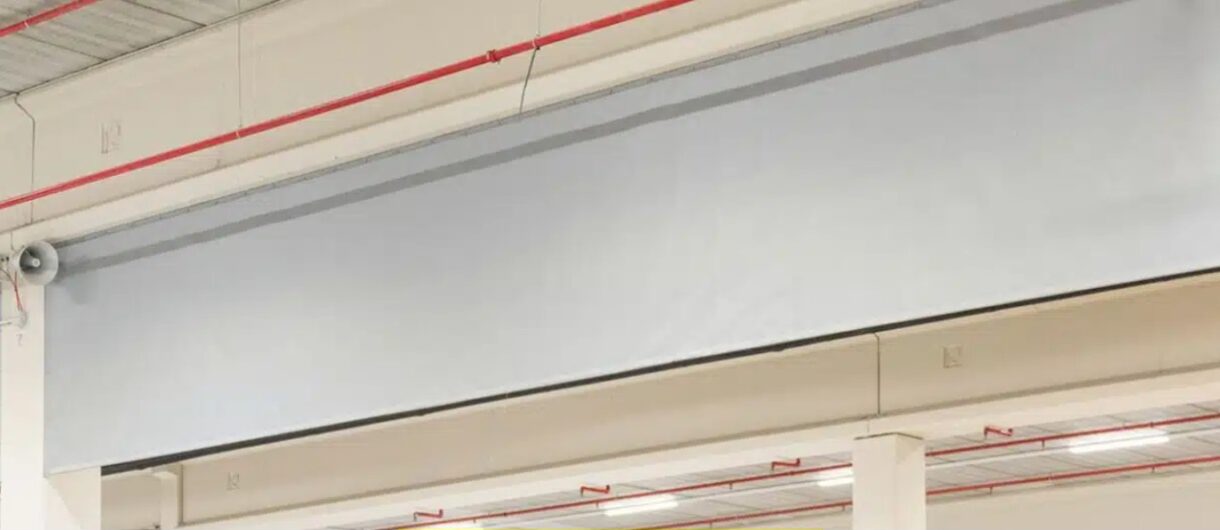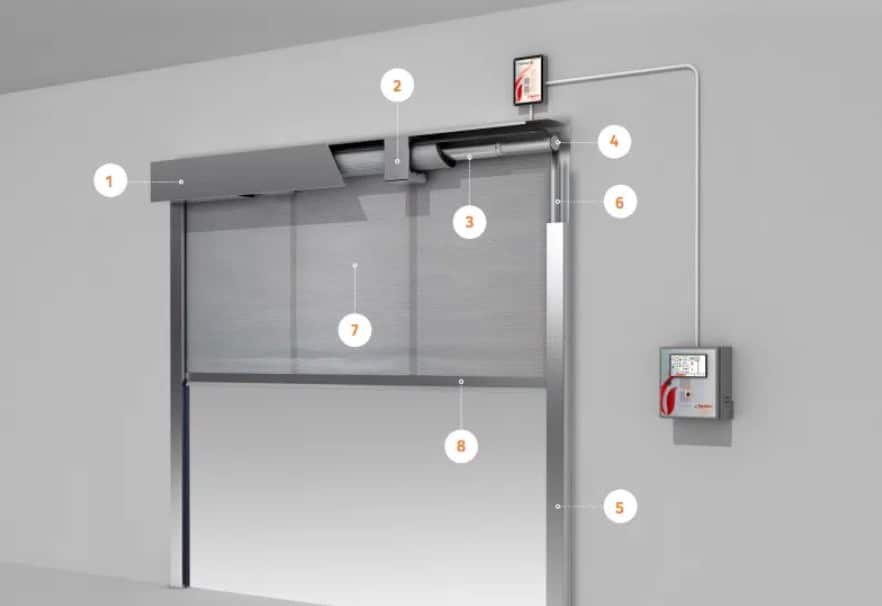
Fire-resistant textile curtains: what are their main components?
In the world of fire compartmentalization, one of the most innovative fire protection systems is fire-resistant curtains.
These systems prevent the spread of fire and smoke during any fire, minimizing damage.
Fire-resistant curtains are passive protection systems designed to offer an aesthetic and invisible solution for creating fire sectors. They are lightweight and compact systems that facilitate their installation or application in tight spaces or complex architectures.
Today, we dive deeper into these fire protection systems (PCI) and their essential components.
How do fire-resistant curtains and smoke barriers work?
When a fire alarm is triggered, the fire-resistant curtains descend by gravity, always at a controlled speed, even if they completely lose their connection to the control panel or power source. This safety method is known as “Fail-safe” or secure closure.
In the absence of an alarm, the curtains remain retained in their container box, hidden or adapted to the architectural space, and are activated in the event of a fire…
In this way, these systems automatically ensure integrity, low radiation, or thermal insulation.
What is a fire-resistant curtain made of?
Fire-resistant curtains are composed of a mechanical element, a textile screen, and an actuator mechanism. Let’s take a closer look at their main components:

1. Container box
A metal casing made of galvanized steel that contains the folded or rolled textile element inside. Depending on the type of curtain, it can have different shapes or geometries to adapt to the specific needs of each project, as well as various finishes and colors.
2. Removable supports
These supports are used for forming the box and are made with rounded edges without sharp corners. They can have a front or bottom opening depending on the model.
3. Roller for rolling the fabric
A metal shaft around which the textile of the curtain is rolled, located inside the container box.
4. Motor
This is a key component for the curtain’s operation. These are motors with planetary gear reducers adapted to each dimension, and equipped with “TGFS” (Total Gravity Fail Safe) technology, ensuring controlled descent even when disconnected from the control modules.
5. Lateral guides
Rails made from galvanized sheet metal of varying thicknesses through which the curtain’s fabric slides.
It is important to note that we have fire curtains models without lateral guides. This is the case of our MFB BLIND accordion/concertina curtain, whose design allows us to adapt to different geometries without the need for lateral guides.
6. Fabric retention system
We use “Lanza” systems, formed by a metal tube that runs along the vertical of the guide, preventing the fabric from slipping out of place.
7. Technical fabric
This is the textile used to make the curtain itself. At Tecnitex, we use technical fabrics made of class E fiberglass, reinforced with Inconel steel, coated with different finishes depending on the model and classification of the system.
You might be interested → The properties of fiberglass for fire protection in E classifications.
8. Counterweight
Also known as the closure profile, it is located at the bottom of the fabric and ensures the stability of the curtain during descent, as well as serving as a closure element for the steel box and as an adaptation to false ceilings when the curtain is folded.
9. Control panel (CCF-CST)
The control panels are responsible for receiving the signal from the fire detection system and, therefore, activating the curtain system. They can also be interconnected with other systems within an integrated fire safety system (SCTEH), such as smoke vents, and with active protection systems like automatic sprinklers.
These are modular elements that allow monitoring of the system’s status at any given moment and assessing maintenance needs.
10. Motor control module
This is an electronic control unit for managing the motors’ status. It is responsible for performing the operations of raising, stopping, and lowering the curtain, as well as sending information about the motors’ status to the control panels (CCF or CST).
Now you know the functioning and components of fire-resistant curtains, lightweight and compact solutions that don’t overload roofs or lintels, capable of withstanding temperatures over 1000°C.
At Tecnitex, we specialize in the engineering, design, manufacturing, installation, and supervision of fire protection textile solutions and have over 20 years of experience in projects of all kinds.
Contact us, and we will offer you a tailored compartmentalization solution for your project.